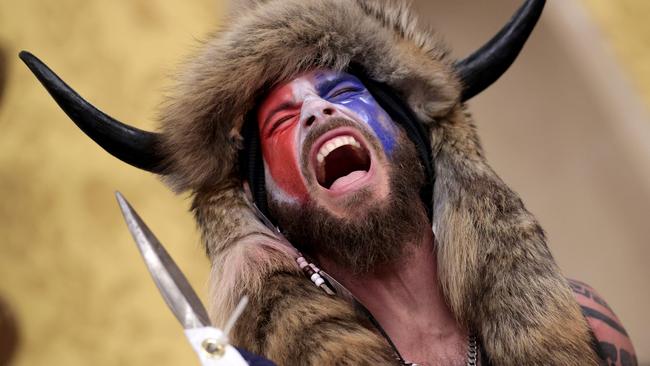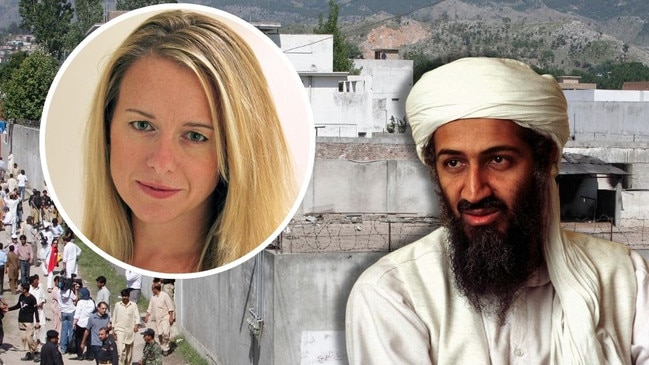‘Stop the presses’: breaking the news of new pope Benedict brought the world to a halt
When the wisps of white smoke billowed from the Vatican chimney, The Australian newspaper had long been put to bed. Our correspondent couldn’t wait another day to file. We share this story for our 60th anniversary.
ROME, 2005: “Stop the presses!’’ I bellowed, as wisps of white smoke billowed from the Vatican chimney. I had to holler into the phone so my editor could hear me over the cacophony of the jubilant crowd cheering in St Peter’s Square.

It was long after midnight in Sydney on April 20, 2005, and The Australian newspaper had long been put “to bed’’, in the era when online news was in its infancy. I couldn’t wait another day to file.
Fingers flying, a copytaker touch-typed at her desk in the Sydney newsroom as I dictated a first draft of history half a world away – breaking the news that Joseph Ratzinger had just been elected as Pope Benedict XVI, the first Pope of the new millennium. The night editor tore up his front page for my late-breaking “splash’’ – and stopped the presses to print thousands of copies in a special edition.
Twelve days earlier, I had covered the funeral of Pope John Paul II, where an astounding 300,000 pilgrims had joined the kings, queens, prime ministers and presidents of more than 150 nations, crammed into St Peter’s Square.

My Vatican media pass gave me access to the most extraordinary bird’s-eye view of the open-air funeral mass. These days, there’d be a six-month security vetting process, metal detectors, bomb-sniffer dogs and body searches. Back then, I just flashed my pass and was led upstairs to the top of the magnificent colonnade, directly above US president George W. Bush, French president Jacques Chirac, British prime minister Tony Blair and Prince Charles.
The thwok-thwok of helicopters failed to drown out the beautifully haunting voices of the leaders of the Orthodox churches, as they sang prayers over the Pope’s simple pine coffin – a vision I shall never forget.

The death of Pope John Paul II and election of Pope Benedict XVI was the most memorable story I covered during seven years as Italy Correspondent for The Australian. Immersed in history, culture and beauty, it was a wondrous time and place to work as a newspaper journalist, with open-door access to some of the world’s biggest events and most interesting and creative people.
Giorgio Armani, the venerable fashion designer, invited me to a private party at his home in Milan. I rocked up on time – only to discover, to my alarm, that I was the first to arrive. The door was opened by a handsome young man who led me to the rooftop terrace, where Mr Armani greeted me with a grin and chivalrously held my hand as I climbed the final few stairs. Chatting in Italian, we engaged in small talk about his fabulous rooftop garden, and how he’d had the mature olive trees brought in from the countryside. I was the only foreigner among a well-behaved party of soccer players, glamorous Italian WAGS, models and celebrities. In Italy, it was rare to see anyone drunk.

Milan Fashion Week was my regular reporting gig. I’d spend weeks pestering and pleading for tickets to designers’ shows. Racing against the clock, I’d jump on and off trams, buses and taxis to travel between the fashion show venues dotted all over Milan, and jostle with the fashionistas queuing for a seat closest to the catwalk. I had fun sneaking backstage to interview the designers.
Fashion designers certainly know how to party. To celebrate their 20th anniversary, Domenico Dolce and Stefano Gabbana transformed an industrial warehouse into a glittering disco, where the scandalous Italian prime minister, Silvio Berlusconi, danced with showgirls under the glare of his beefcake bodyguards.
The most fabulous festa of all was hosted by Donatella Versace, who had Prince perform for her guests in a Milanese theatre.
It was nearly as thrilling as telling my editor to stop the presses.
More Coverage
60th Anniversary Witnesses to history

For a journalist, no story comes close to this one
The Australian’s former US correspondent was outside the Capitol on the day an angry mob invaded, urged on by Donald Trump.

Simple instructions: ‘Wear a ballistic helmet and a bulletproof vest’
The kibbutzim might have been tiny villages but they were the model, in miniature, for how a future Israel could have looked next to its Palestinian neighbours. By all rights, our reporter shouldn’t have made it there. But he did.

A large Indigenous man on my porch had an unexpected message
The story of a marriage forbidden revealed systemic racism and led to a life-long connection. For our 60th birthday, Hugh Lunn recalls this touching story.

Inside story: How Osama bin Laden hid in plain sight
The Australian’s then-South Asian correspondent had numerous run-ins with armed Pakistani police while covering the story of the decade. But nothing they could dish out could have been worse than having to tell the editor she’d been kicked out.

Cold, furious: The most evil man I have ever met
Getting to interview this man was challenging. He hated ‘gringo’ journalists and had vowed he’d never talk to one again. All of my peers warned me he goes crazy if you ask him about the death squads. But I had to try.

‘Stop the presses’: breaking the news of new pope
When the wisps of white smoke billowed from the Vatican chimney, The Australian newspaper had long been put to bed. Our correspondent couldn’t wait another day to file. We share this story for our 60th anniversary.

The first big yarn to take a toll on Hedley Thomas
Being sent to cover the bloody overthrow of the communist regime in Romania was a seminal experience for a young reporter who would become one of The Australian’s most highly acclaimed journalists.

At the scene of the story that gripped the world
Reporting from the muddy mouth of the cave complex as a monsoon loomed, it felt crushingly inevitable we would be relaying grim news about a trapped junior soccer team. But then came a sudden turn.





To join the conversation, please log in. Don't have an account? Register
Join the conversation, you are commenting as Logout